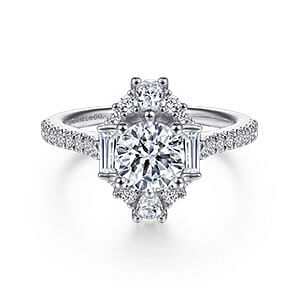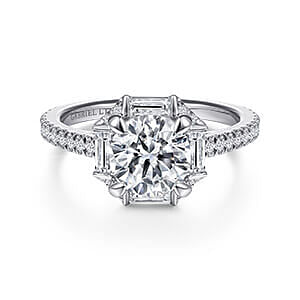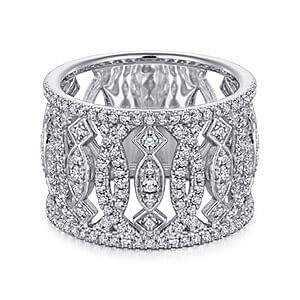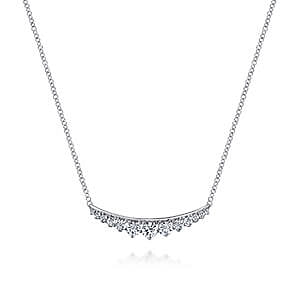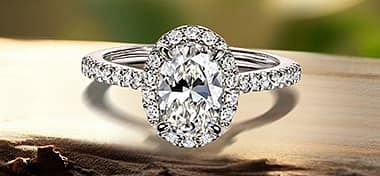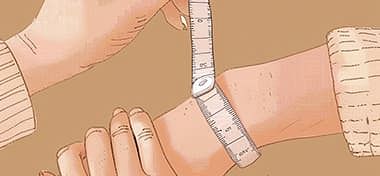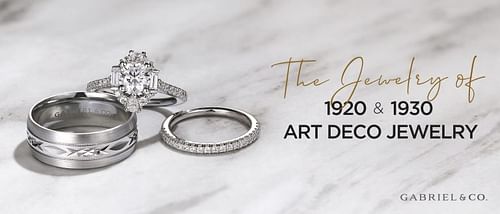
Every era produces unique styles and trends that take the generation on a fashion roller coaster. However, only a few eras and designs stand the test of time to become classics. Their allure refuses to fade away, continuing to influence the core of fashion in succeeding generations. Art Deco represents one such era: an artistic period that began in the 1920s, just before the First World War.
Charismatic, daring, and dazzling- the Art Deco era which first initiated in France, was all about edgy creativity. The Art Deco style, heavily influenced by the period's architecture and geometrical shapes, produced some of the most elegant and astonishing jewelry trends ever. The style continued from the early 1920s, to reach its pinnacle post the first world war and then subdued just around the beginning of the Second World War.
So, let's go back in time and look at the Art Deco: the art in context and the jewelry and styles designed and produced during that time.
Art Deco: The Art in Context
As the world was slowly coming out of the war tragedies, fashion took a more playful, exquisite, and pragmatic turn. Breaking free from the shackles of etiquette and constraint of the Edwardian era, Art Deco eventually made its way into mainstream society— a society that was yearning to indulge and let themselves loose.
The term 'Art Deco' took its name from the International Exhibition of Modern Decorative and Industrial Arts that was held at the World Fair in Paris, in 1925. The era witnessed peak of modern and intricate artworks, which reflected the post-war sentiment of luxury, glamor, and exuberance. The designs celebrated artistic pursuits in a chaotic post-war period.
Art Deco Jewelry: The Epitome of Form and Fashion
To fully appreciate the exquisiteness of Art Deco jewelry, it is necessary to understand the nuances of that era. While we cannot delve deep into all of it, let's read about and appreciate the jewelry trends that emerged in that period.
Jewelry With a Jazz
The 1920s was the age of Jazz. The jazz jewelry pieces reflected the era's spirit. With unfiltered style and symmetries, this jewelry made modernism a cool thing, even before it was a catchword. Lines, angles, and other geometric forms were merged with colored gemstones and vibrant motifs to add playfulness to the jewelry pieces. Designs were heavily influenced by Egyptian motifs, Ballet Russes, Mughal royal jewels, and featured expensive materials like ebony and ivory. Interesting to note, most of the sky scrapers in New York city, including the Empire State Building and Chrysler Building, built at that time, reflect the Art Deco architecture.
Geometric Shapes
The pinnacle of the Art Deco movement was incorporating bold and sleek GEOMETRIC shapes in jewelry. Art Deco jewels cast aside the Belle Epoque themes of the Art Nouveau era (1890-1910), that focused more on flowing lines and dreamy architecture. Art Deco, on the other hand, embraced modernism and technological progress that introduced sharp edges, lines, angles, and symmetry.
In jewelry, inclinations were more toward incorporating 'cubism' – the revolutionary approach to representing reality, instead of the decoration of superfluous embellishments. Jewelers began to use more unusual stone combinations as designs combined different metals.
New Inspiration and Cuts
Although Art Deco jewelers were spread worldwide, they all had one goal: to break free from the unnecessary extravagance of the past and incorporate the modernism of the post-war period. More organized and rationalized jewel pieces were crafted to liberate the women's movement.
European cut diamonds rose to prominence during this era. With 58 facets, this cut is widely regarded as the forerunner of modern round brilliant cut diamonds. Gemstone cutters had to rely heavily on their eyesight since these were hand cuts.
The Art Deco era was one of invention, and master jewelers of the time reflected that spirit. Fashion took a different turn and angle with Baguette Diamonds, Caliber cut, French cut, and Asscher cut. The stones were intricately set to provide a continuous flow of color throughout the jewelry piece.
White Metals
This era boosted the use of white metals- white gold and platinum. While platinum was expensive, white gold quickly gained popularity as the most suitable alternative. Yellow gold continued to appease the patrons, but white gold stole the show.
The metal was used to curate sleek, modern, and sophisticated designs. Other white metals found in authentic Art Deco jewelry include:
1. Sterling Silver
2. Nickel Silver
3. Silver-plated base metal
Fashion Jewelry
Art Deco jewelers commonly encircled the centerpiece with pave setting or clustered gemstones. This setting grew increasingly prevalent for adding dimension and accent to the fashion jewelry pieces. Also, the wide band rings became a huge trend and women would flaunt their fashionable rings without any center stone diamond.
Sleek necklaces complemented the plunging necklines and backless jazz gowns. Wearing cocktail rings and bracelets was also very fashionable.
Earrings in geometric shapes enhanced with lavish diamonds became popular. Free to dangle, they complemented the era's short hairstyle. In addition, pieces were sequentially styled and set with small diamonds, emphasizing the wearer's feminine side. Hoops were a major trend in this period.
Statement Jewelry
The Art Deco jewelry appealed to women who were not reluctant to move out of their comfort zone and make a style statement. They revived the era with glamor but without any superfluous decorations. Large diamond engagement ring (in more shapes than just round) with halo diamond settings were hugely popular.
Rounding up the essence of the Art Deco Era - it inspired timeless styles, from geometric shapes, white metal to caliber cut diamonds. This era's jewelry is ideal for those who want to go bold with strong statements, abandoning extravagant fashion aesthetics. Whether you prefer vintage jewelry or modern styles, Art Deco-inspired pieces lend a strong expression to your personality. Shop from the exquisite collection of Art Deco jewelry at Gabriel & Co.



